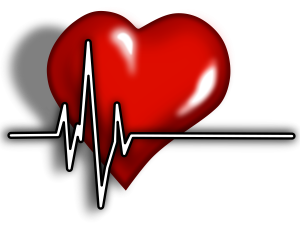 By Michele Lloyd, RN, Hospice Sunset administrator
By Michele Lloyd, RN, Hospice Sunset administrator
On September 25, 2013, as I sat watching TV with my husband Dave, I felt as if I had indigestion. I complained for about 20 minutes and then decided to take some TUMS and go to bed. However, something didn’t feel right; I had never really had indigestion. I took the TUMS but also took an aspirin “just in case.” After getting in my PJs, I sat on the side of the bed worried that I was maybe ignoring something more serious. When I lay down, I knew it was more. I felt like a sledge hammer hit me in the middle of my chest. I got dressed, grabbed my purse, reassured Dave that I would be home soon and was just going to the ER to get checked out … just to be safe. Three days later I returned home with a stent in my LAD (the big artery that encompasses the heart. Doctors call it the “widow maker.”). At the age of 50, I now had coronary artery disease.
According to the Centers for Disease Control and Prevention (CDC), heart disease is the leading cause of death for women in the United States and almost two-thirds of women who die suddenly of coronary heart disease have previously had no symptoms (like me). Women are more likely to experience chest pain that is sharp, burning (like me), and more commonly have pain in the neck, jaw, throat, abdomen or back. Others may experience angina which is a dull, heavy to sharp pain or discomfort in the chest. Symptoms may occur while at rest, during physical activity, or during times of mental stress. Sometimes heart disease is silent and remains undiagnosed until a woman experiences signs or symptoms of a heart attack, heart failure, arrhythmia, or stroke.
As women age, the risk of heart disease increases due to several factors. The loss of estrogen that occurs with menopause may contribute to heart disease. Changes in the walls of the blood vessels make it more likely for plaque and clots to form, increased LDL (“bad”) cholesterol or decreases in HDL (“good”) cholesterol can result in plaque formation in blood vessels, and increases in fibrinogen (a substance in the blood that helps the blood to clot) makes it more likely for clots to form thus narrowing the arteries and reducing blood flow to the heart.
So what can we do reduce the risks of heart disease? First, know your personal risk factors. These can include a family history of heart disease, high blood pressure, high LDL cholesterol, smoking, diabetes, obesity, poor diet, lack of exercise or activity, and excessive alcohol use. Next, discuss your risk factors with your physician and develop a treatment plan that is individualized for your needs. This may include:
- Making healthy food choices and following a diet low in saturated fat, high in fiber, whole grains, legumes, fruits, vegetables and fish.
- Exercising 30 minutes, at least three times per week
- Avoid or quit smoking
- Lose weight and /or maintain ideal body weight
- Treat and control medical conditions such as diabetes, high cholesterol, high blood pressure
- Discuss whether Hormone Replacement Therapy is appropriate as menopause approaches.
Since my heart attack, I have become more aware of my own risk factors and have worked to reduce my risks while also recognizing that change is difficult and a daily struggle. Don’t ignore your symptoms, you know your body better than anyone else. Wishing you all a healthy heart!!






Michele presented a program on “heart health” at a recent gathering of ladies at Trinity Lutheran Church in Clifton. Her presentation was awesome and truly from the heart. She gave “kudos” to LSM and invited everyone to come and check it out. She is a true asset to LSM!